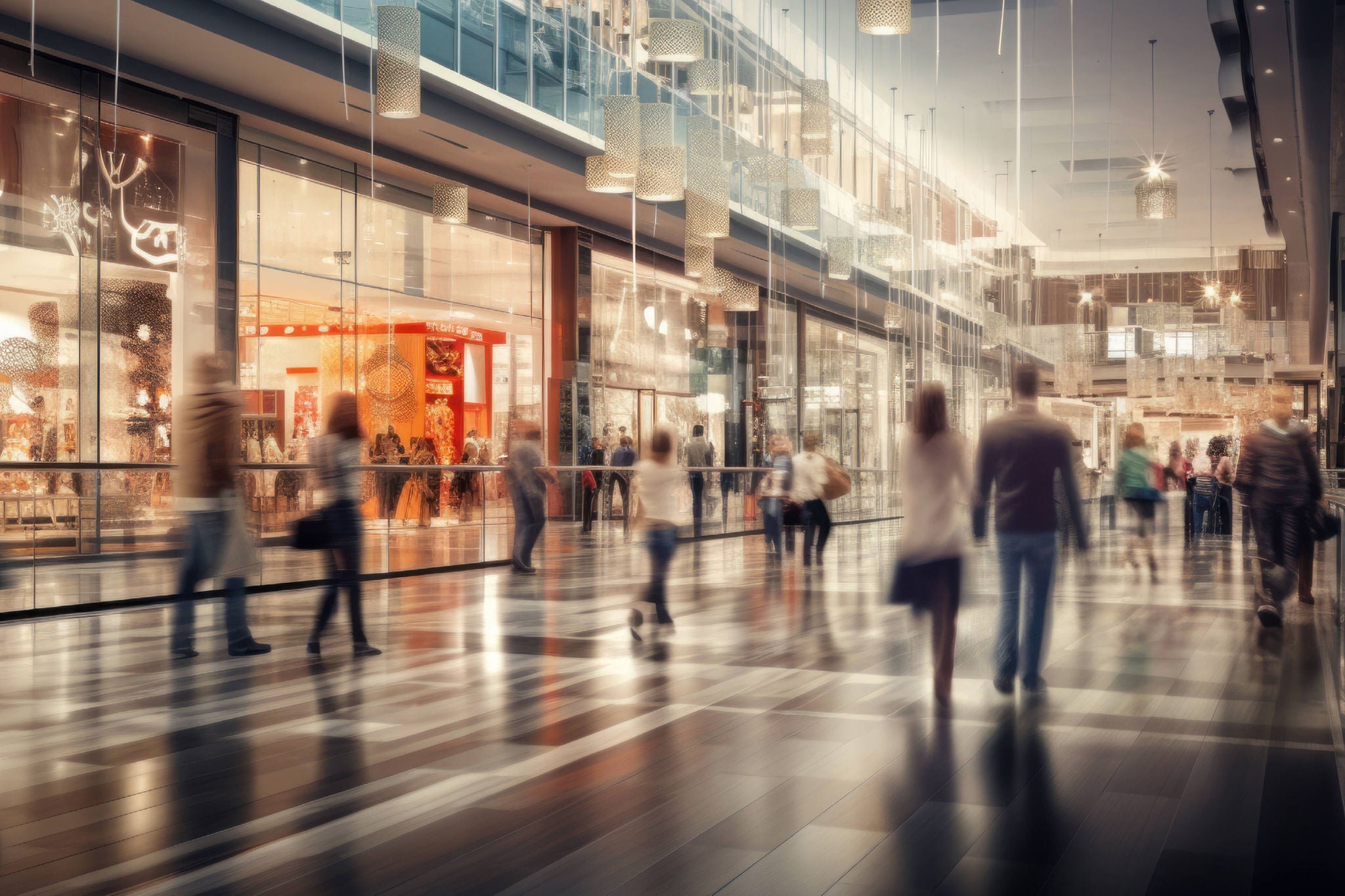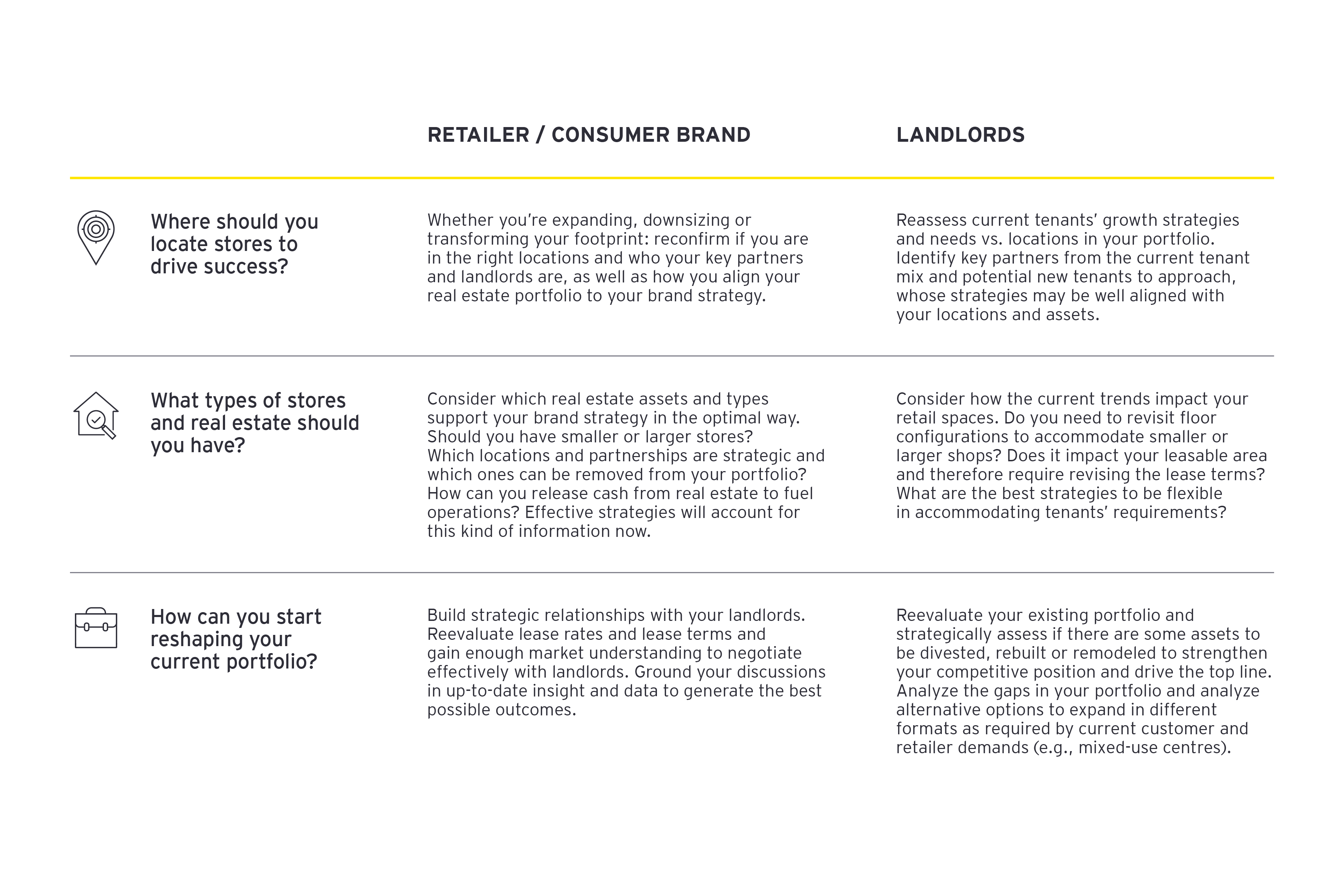As the pandemic receded, retailers realized real estate footprints had significantly changed and started re-evaluating their real estate portfolios and strategies accordingly. In certain categories, the switch to online platforms reduced the need for such large spaces, necessitating smaller physical stores and more strategically located distribution centres.
Additionally, major brands — including large Canadian department stores — consolidated store networks and closed underperforming locations to optimize their real estate assets.
Alternatively, retailers that did not have a physical presence prior to 2020 have since taken up selected locations to provide better customer experiences. For example, Joanna Griffiths, founder of intimate apparel brand Knix, recently explained how her once online-only brand is now transitioning to omnichannel, with brick-and-mortar locations across North America. She told EY Leaders in Retail series the move came directly from listening to the community her brand has thoughtfully built over the last decade, and wanting to provide a physical store experience directly aligned to customer expectations. She has invested strategically in real estate spaces that allow to deliver on that front.
Retailers are also using select real estate spaces and arrangements — like pop-up shops and flexible leasing arrangements — to test new markets, promote brand awareness and adapt quickly to changing consumer preferences.
Here in Canada, a notable athleisure brand is testing a similar strategy, experimenting with pop-up shops in various locations to reach new customers and test markets before committing to permanent locations. Additionally, there are examples where, retailers are repurposing existing buildings and integrating retail spaces into mixed-use developments to enhance urban revitalization efforts and maximize space utilization. Think along the lines of major chain stores launching “city” versions in urban centres, demonstrating a shift towards more integrated real estate strategies that combine retail, residential and commercial usage.
As Robert Horst, VP Retail, Oxford Properties Group, explained: “... retail has always been evolving. Oxford's evolving our properties along with it. One of the biggest changes we're seeing now is many shopping centres across Canada are looking at mixed-use as an opportunity. It means giving more reasons and more things to do at the shopping centre, the place to live, work, shop, play and learn."
Naturally, these trends are significantly affecting and reshaping the demand for commercial spaces, as retailers pivot from traditional sales models to offering enriching, experience-based services such as fitness classes, beauty treatments and culinary experiences. We’re also seeing growing demand for smaller and adaptive store formats and flexible leases as temporary pop-up shops try to adapt to changing consumer preferences and reduce fixed costs.
While e-commerce continues to capture the market for physical goods, physical retail spaces are increasingly repurposed to host unique, experiential services that draw customers in and encourage social sharing. This necessitates a re-evaluation of real estate strategies, favouring versatile spaces that can accommodate personalized and community-oriented services.
In this environment, retailers, landlords and property managers must all think strategically about physical spaces. While retailers may want to reimagine their physical footprint, building owners should also be thinking about how best to capitalize on the evolving preferences. Across this interconnected ecosystem, retail and real estate stakeholders will want to focus on understanding market preferences and connecting the shape, size, scale and capability of real estate assets with demand.
At EY, we work with consumer brands and retailer landlords to align real estate footprints to the experience they want to create by focusing on three major questions relevant for both parties:






